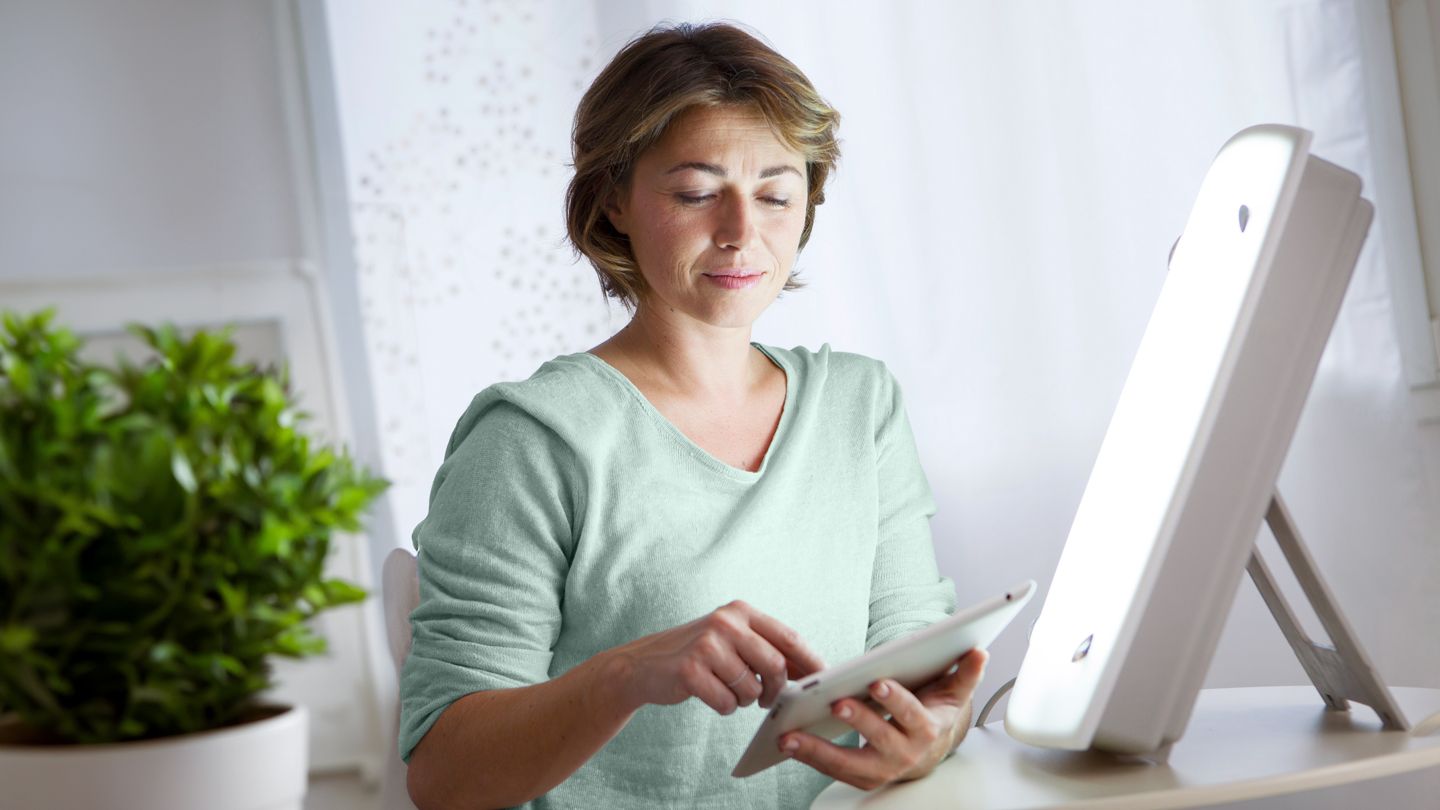Bright light therapy, a standard treatment for seasonal depression that’s triggered by dark days during the winter, may also help people who experience depression throughout the year.
In a new study, scientists examined data on a total of 858 adults with nonseasonal depression, taken from 11 clinical trials. Participants were randomly assigned to receive bright light therapy alone or combined with antidepressants, or assigned to control groups that received only medication, a placebo, or dim red light therapy.
When researchers looked at treatments that lasted less than four weeks, people who received bright light therapy were three times more likely to experience symptom improvement or remission. For treatments lasting more than a month, symptom improvement or remission were twice as likely to occur with bright light therapy.
“Our findings suggest that a one-week duration of bright light treatment may be as effective as a six-week duration,” says the lead study author, Artur Menegaz de Almeida, of the Federal University of Mato Grosso in Brazil.
Bright light therapy administered to participants typically lasted at least 30 minutes. Light boxes used for the intervention had a brightness of 10,000 lux, roughly equivalent to outdoor light on a nice day.
One limitation of the new analysis is that the smaller studies of bright light therapy differed in duration, making it hard to determine exactly how many weeks of treatment might be ideal, according to the study. Another drawback was that researchers were unable to distinguish between the effects of bright light therapy for bipolar disorder and for other types of nonseasonal depression.
What to Look for in a Light Box or Light Therapy Lamp
Bright light therapy can be an effective intervention on its own or combined with antidepressants, as long as you get the right type of light box (also called a light therapy lamp) and use it correctly, says Raymond Lam, MD, a psychiatry professor at the University of British Columbia in Vancouver who wasn’t involved in the new study. A good light box will provide at least 10,000 lux and be large enough to bathe you in light if you’re sitting a few feet away while it’s on a desk or table.
“You don’t have to stare at it,” Dr. Lam says. “You can read or eat breakfast or check your email, but you have to be awake, because it won’t work if you’re sleeping or your eyes are closed.”
When Is the Best Time to Use a Light Therapy Lamp?
Bright light therapy will work best for improving your mood when you use it first thing in the morning, Lam says. That’s because this is the ideal time to sync up with your circadian rhythm, or biological clock, and trigger chemicals in your brain that are thought to improve mood, Lam says.
“Bright light at noon has no effect,” Lam says. “It doesn’t matter how much light you get throughout the day. It’s how much bright light you get in the morning, and light therapy early in the morning is what you need to improve depression.”
Bright Light Therapy Is Not a Substitute for Seeing a Doctor
It’s best to see your doctor if you’re thinking about trying bright light therapy, especially if you haven’t previously been treated for any type of depression, says Lam.
“If you’re having acute symptoms of major depressive disorder, you should see a clinician,” Lam says. “If you have bipolar disorder, bright light therapy could switch you from depression to a hypermania episode, so there are risks that a clinician should assess.”
Read the full article here




